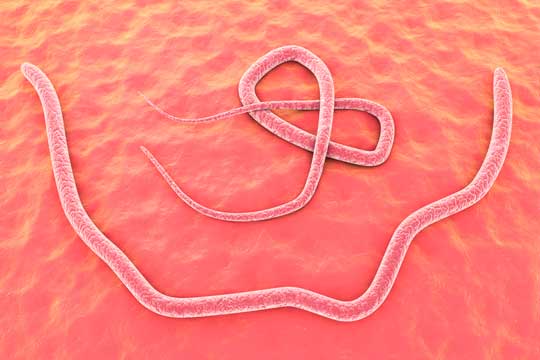|
Did you know that, for every human on Earth, there are 60 billion roundworms? That's billion with a B. And these are just the ones that live in the earth's topsoil. Roundworms, also called nematodes, make up a diverse phylum of animals. some of them are parasites, but many more are free-living creatures that have adapted to almost every habitat on Earth. If you went outside and drew a one-meter square on top of the soil, that square would likely contain over a million living nematodes. Several hundred per teaspoon of soil.
If you just consider total numbers of individuals, nematodes make up 80% of the animals on this planet. If roundworms are so abundant, why do we not think about them and talk about them more often? Well, nematologists talk about them all the time, but the rest of us not so much. Probably because most of these gazillions of roundworms are quite small—out of sight, out of mind. Most of them are about 1/500 of an inch (50 µm) in diameter and 1/20 of an inch (1 mm) long. What do all these nematodes do in the soil? Some gobble up bacteria for entertainment. Others prefer feeding on fungi, and still others are predators, attacking protists as well as other animals, including other nematodes. The next time you scoop up a handful of soil in your hand, remember that it contains an entire world of little critters going about their daily business.
0 Comments
Leave a Reply. |
Stan's Cogitations
Everyone needs a creative outlet. That's why I write. Archives
July 2024
|


 RSS Feed
RSS Feed